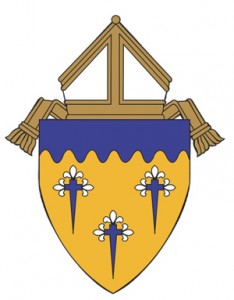Dcn. Al Goodrich
Editor’s note: This is part of a series of articles on the permanent diaconate in the Diocese of Superior.
While I was aware of the return of the permanent diaconate that came out of the Second Vatican Council, I didn’t give it much thought until Fr. Kowalski from Poland came to St. Peter’s in Eagle River to help out in the early 1970s. I was a lector and a catechist at the time.
He remarked after Mass that I would become one of those deacons they were talking about in Rome. I assured him I had not thought of it and, in any case, I was too young and had not thought about marriage.
Well, about 20 years later when I was ordained, I sent him an invitation and reminded him that he prophesied this some years ago. He responded that he was sorry he could not attend, but he was happy to know that the only prophecy he ever made had come true.
La Crosse and Green Bay dioceses began to ordain permanent deacons in about 1975, but as Fr. Mullen said in his article, that was about the time the Superior Diocese began to plan their program. The return of the permanent diaconate was up to the local bishop, so classes and requirements varied. Our classes began in about 1980 with the original 12 applicants. The program was designed in such a way that you began with the class that was offered at that time, much like the master’s degree program at the University of Wisconsin-Superior.
I thought I would wait until the program was well established, since I was married in 1976 and we had two small children. However, Fr. Fries, my pastor at the time at St. Kunegunda, encouraged me, and my wife, Lynn, consented. So I applied and was accepted in 1982.
There was fear at the time that deacons would be viewed as “mini” priests. Therefore, we were told that we should be non-clerical deacons. We were seldom to serve on the altar, would not wear a clerical shirt and collar, and would not automatically have faculties to preach. Some priests called us “lay deacons.” I thought that was kind of like a dry rain.
In any case, with a few bumps along the road, our first deacons were ordained in 1986. I was ordained as the 19th deacon for the diocese at St. Kunegunda in Sugar Camp in August 1990. There has been a lot of evolution in the role of the deacon since then. In the first 10 years of my diaconate, I continued to teach a confirmation class, led the Stations of the Cross during Lent and an occasional Scripture/Communion service when the priest was absent. As I recall, I presided at a few weddings, conducted an RCIA program and assisted with a few annulments. As Fr. Mullen alluded to, there was some resistance to the diaconate on the part of some pastors, so I seldom assisted at Mass and never preached.
Our pastor died in 1999, and we were clustered with St. Teresa in Three Lakes. This began a whole new phase of my diaconate. Our pastor was aging, and I saw my way clear to retire from teaching and coaching at the local high school. This gave me more time to dedicate to the two parishes. The other deacon and I began to assist at most Masses. The two of us attended a course and were given faculties to preach. I became the director of religious education in Three Lakes and was given many diaconal duties in Sugar Camp. This included most baptisms, weddings outside of Mass, funerals outside of Mass, Stations of the Cross, annulment preparation, baptism and marriage preparation, occasional preaching and assisting as deacon at Mass.
After 15 years, when our pastor, Fr. Bill Horath, died, we received the first of our international priests. For the first time in my life, I had a pastor who was younger than me. His untiring energy and my age convinced me that after 25 years of active service, it was time to retire. I am still trying to define what retirement means after almost 33 years of service, but in essence, it means I am not scheduled. I still have faculties to do diaconal work, and I help out where and when I am needed. My biggest problem over the years has been how to balance family, work and the diaconate. I am afraid I neglected my family. Somehow, there is never enough time to meet the needs of all three.
I mentioned that our diaconate in the Superior Diocese has changed considerably since its inception, as the needs of the diocese have changed. Half of our priests are now foreign-born and on loan to us. Clustering came about to better use our declining supply of priests, and needs beyond the priestly sacraments have increased the need for diaconal service. Several deacons are now in charge of clusters and are called Parish Life Coordinators. In the Eagle River-area cluster of five parishes, there is a deacon preaching at all seven of the weekend Masses every third weekend of the month and frequently assisting the two priests at other times. The diocesan Presbyteral Council recently agreed that deacons should wear a clerical collar when acting in a clerical capacity. This is especially important in hospital and nursing home ministry and at ecumenical gatherings of clergy.
If you are curious about diaconal service in our church, please contact the diaconate office at the Chancery in Superior. The diocesan website, catholicdos.org, is also a good resource.
It is a wonderful privilege to perform diaconal work with a dedicated group of Christian servants.
Dcn. Albert (Al) Goodrich has been married to his wife, Lynn, for 47 years. They have one adult son, two adult daughters and two grandchildren.

